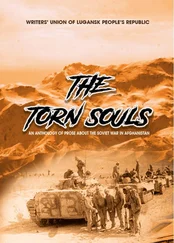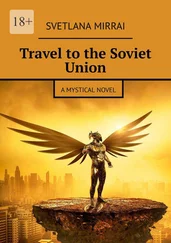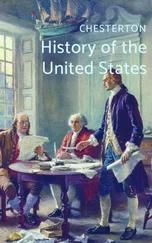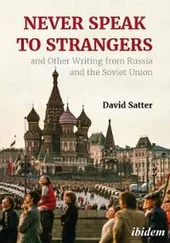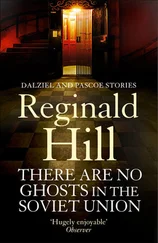The new-found freedoms of February caused a tremendous upsurge in the ordinary people’s capacity to organize themselves. It is often supposed that the Russians are a passive people, accustomed to doing what their rulers tell them. Actually, this is far from being the case. Partly because of the huge distances, many Russian communities remained, at least up to the early twentieth century, relatively unaffected by central government, and had to improvise their own arrangements. But even where government has been near and ever-pressing, Russians have always been highly inventive in devising social forms such that they appear to be obeying their rulers, whilst in fact running matters as far as possible to their own advantage. This was the centuries-old basis of the peasant commune, which the government had always intended as an agency for taxation and military recruitment. Now, in 1917, with government repression suddenly removed, there was a veritable explosion of ‘self-help’ organizations among Russian workers, peasants and soldiers, each with their own, often exaggerated demands.
The peasants saw in the February revolution an opportunity to rectify what they considered a very longstanding injustice, that much of the land they worked did not belong to them. As a resolution from Samara province put it, ‘The land must belong to those who work it with their hands, to those whose sweat flows.’ Peasants were prepared to support the Provisional Government as long as it appeared to be actively promoting a wholesale transfer of land to them. As the months passed, and the Provisional Government did nothing, they lost interest in it and turned instead to direct action. Ironically, the government helped them to create the institutions which made this possible: the local land committees, which it set up to carry out a land survey and prepare for the ultimate land reform, actually became dominated at the lowest level by the peasants themselves, and increasingly proceeded to direct land seizures. This was especially the case after the army began to break up. A typical scenario was for a deserter to return to the village from the front, bringing news of land seizures elsewhere. The peasants would gather in their traditional mir assembly, or use the facade of the local land committees; they would discuss the situation and decide to take the local landowner’s estate for themselves. They would then all march together up to the steward’s office, demand the keys, proclaim the land, tools and livestock sequestered and give the owners forty-eight hours to leave. Then they would divide up the land among themselves, using the time-honoured criteria employed in the mir, the ‘labour norm’ or the ‘consumption norm’ (i.e. the number of working hands available, or the number of mouths to feed), whichever prevailed in local custom. They used violence where they thought it necessary, or where things got out of hand.
Inevitably, then, a gulf of mistrust opened between the peasants and the Provisional Government. It was widened by the government’s supplies policy. Because of the problem of supplying the towns with bread, the tsarist government in its last months had instituted a grain monopoly at fixed prices. The Provisional Government felt it had no alternative but to continue this, though the belatedly adjusted prices in a period of high inflation inevitably caused resentment among the peasants. Ultimately, indeed, it led to the peasants’ refusing to part with their produce in the quantities needed. This is where the backward nature of the rural economy became a positive strength to the peasants. It was, of course, more convenient for them to buy matches, paraffin, salt, ironmongery and vodka from the urban market, but, if the terms of trade turned badly against them, then peasants could always turn their backs on the market and make do with the primitive products they could manufacture for themselves. During the summer and autumn of 1917 this is what many of them began to do, resuming a natural economy which their fathers and grandfathers had gradually been leaving behind, shutting themselves off from the market and refusing to provide food for anyone outside their own village. All Russian governments had to face this potential isolationism of the peasant communities until Stalin broke open the village economy by brute force in 1929–30.
Nowhere was the exuberant improvisation of the revolutionary period so evident as in the multiplicity of organizations created by the workers of Russia’s cities. Pride of place, of course, belonged to the soviets, to which the workers of Petrograd streamed back as soon as they had a chance in February 1917. It cannot be said, however, that the Petrograd Soviet, or any other large city soviet, lived up to its original ideals. Perhaps that was impossible. The Petrograd Soviet’s plenary assembly consisted of three thousand members, and even its executive committee soon grew to an unmanageable size, so that many of its functions had to be delegated to a bureau of twenty-four members, on which each of the main socialist parties had a prearranged quota of representatives. Naturally enough, these representatives tended to be established politicians and professional men rather than workers or soldiers. In fact, the attempt to introduce direct democracy led to an engaging but unproductive chaos, so that the real business had to be transferred upstairs to a small number of elected officials. This engendered a feeling among the rank and file that their voices no longer counted for anything. As we shall see, this discontent played an important part in the events of 1917, and helped to provide the Bolsheviks with the impetus that carried them to power.
In reaction, workers tended to devote more of their energies to lower level organizations which expressed their aspirations more directly. In some cases this meant the trade unions. These, however, were not well suited to a fast-changing revolutionary situation. They were bodies with some local roots but also strong national organizations: a few of them had managed to survive in shadowy form since 1905, in spite of persecution. They were organized on the ‘production’ principle, that is to say by branch of industry, whatever the precise skill, qualification or rank of their members. This tended to produce hierarchical splits within unions, which weakened their influence. They were also, of course, designed to function within a relatively stable economic and political environment, promoting their members’ interests within that setting. They were not well adapted to fast-changing circumstances or to attempts to assume real power. It is not surprising that the Mensheviks and Socialist Revolutionaries retained a grip on many unions up to and beyond October.
In this respect, the factory or shop committees ( fabzavkomy ) were more suited to the circumstances of 1917. Often their origins were similar to those of the soviets of 1905: they began as informal strike committees during the February-March days, but this time at the level of the individual factory or even shop. The question of how they should develop caused controversy. Many Socialist Revolutionaries and most Mensheviks wanted them to run cultural and welfare facilities for the workers and to represent their interests in negotiations with the employers. That, however, would have reduced them virtually to the status of local trade union branches. The Anarchists, on the other hand, and in the short run the Bolsheviks, wanted fabzavkomy actually to run the factories, or at the very least to supervise the management’s discharge of that duty. The Anarchists intended that in that way they should become units in a self-governing society, while the Bolsheviks planned to subordinate them to the state economic administration of an embryonic socialist society. For both of them, however, the immediate watch-word was ‘workers’ control’, and they persuaded a Petrograd congress of fabzavkomy to adopt it at the end of May–the first institution to pass a Bolshevik resolution.
Читать дальше



